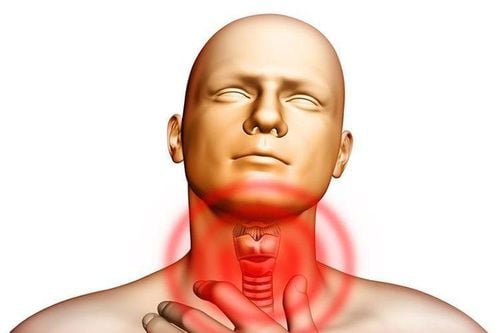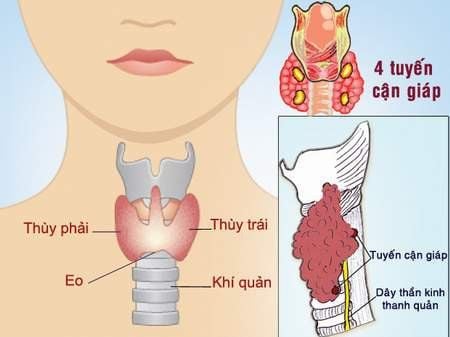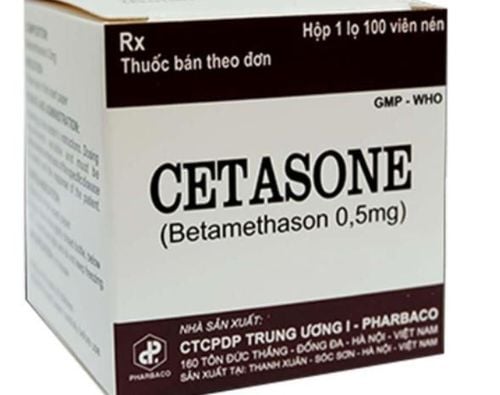This is an automatically translated article.
Thyroid storm is a potentially life-threatening decompensation of hyperthyroidism. Diagnosis of thyroid storm is based on suggestive clinical symptoms and must be treated immediately before laboratory tests are available.1. What is a thyroid storm?
Thyroid storm, also known as paroxysmal hyperthyroidism, is a condition in which thyrotoxicosis appears in paroxysmal (due to decompensation of hyperthyroidism) which is life-threatening and requires emergency medical attention. Although very rare, patients with fulminant hyperthyroidism if not treated promptly face a high risk of death.Thyroid storm often occurs in patients with thyroid surgery, parathyroid gland or trauma, infection, postpartum. And can also occur in patients with hyperthyroidism (due to Graves' disease, goiter, thyroid tumor) with long-term progression but not diagnosed and treated appropriately, fully and promptly.
Recognizing the signs and diagnoses early detection of thyroid storm helps timely treatment to limit the risk of death. Besides, patients before thyroid surgery if well prepared will limit the possibility of thyroid storm.

Cơn bão giáp trạng là gì là thắc mắc của nhiều người
2. Signs of a thyroid storm
Thyroid storm has signs of recognition on the whole body, nerves, heart, and digestive system:Systemic signs: High fever over 39 degrees Celsius, even up to 41 degrees Celsius, sweating Excessive sweating causes dehydration. Neurological signs: Emotional disturbance, agitation, psychosis, coma. Cardiovascular signs: Tachypnea, rapid breathing, tachycardia (>140 beats/min), arrhythmia, atrial fibrillation, congestive heart failure (common in the elderly). Unstable blood pressure, low blood pressure can lead to bad consequences. Paroxysmal hyperthyroidism, if left untreated, can lead to heart failure, death in acute pulmonary edema, congestive heart failure, and cardiovascular collapse. Gastrointestinal signs: Abdominal pain, nausea, vomiting, diarrhea. Accompanied by digestion is jaundice, hepatocyte necrosis or hepatocyte congestion. Signs of myasthenia gravis: Mainly the central muscles, but if severe, the patient may have myasthenia gravis of the extremities, facial and trunk muscles, and muscle contractions of the eyelids.
3. Diagnosis of thyroid storm
Clinical signs are the basis for diagnosis of thyroid storm. Currently, there is no consensus on diagnostic criteria for thyroid storm. Laboratory tests are indicated but are used as a reference in conjunction with Wartofsky's assessment of the likelihood of a thyroid storm. According to this table, the higher the total score, the greater the risk of thyroid storm.
Bảng đánh giá nguy cơ bão giáp trạng
Thyroid storm, although rare, is very dangerous, affecting the patient's life. Therefore, patients as soon as signs of recognition and diagnosis need to be treated immediately.
Currently, the diagnosis and treatment of thyroid storm is carried out regularly at Vinmec International General Hospital, with a team of highly qualified and experienced doctors combined with leading modern equipment. Water helps in the accurate diagnosis of diseases, shortens the time for medical examination and treatment.
Please dial HOTLINE for more information or register for an appointment HERE. Download MyVinmec app to make appointments faster and to manage your bookings easily.













